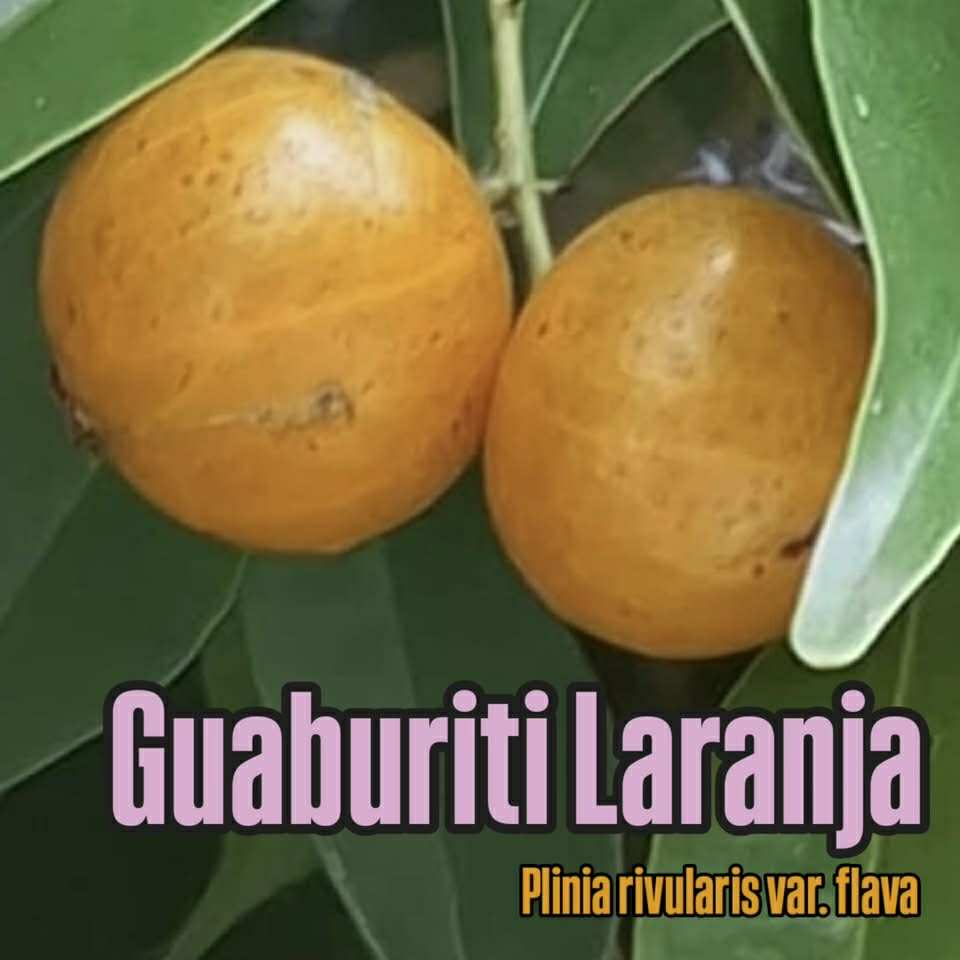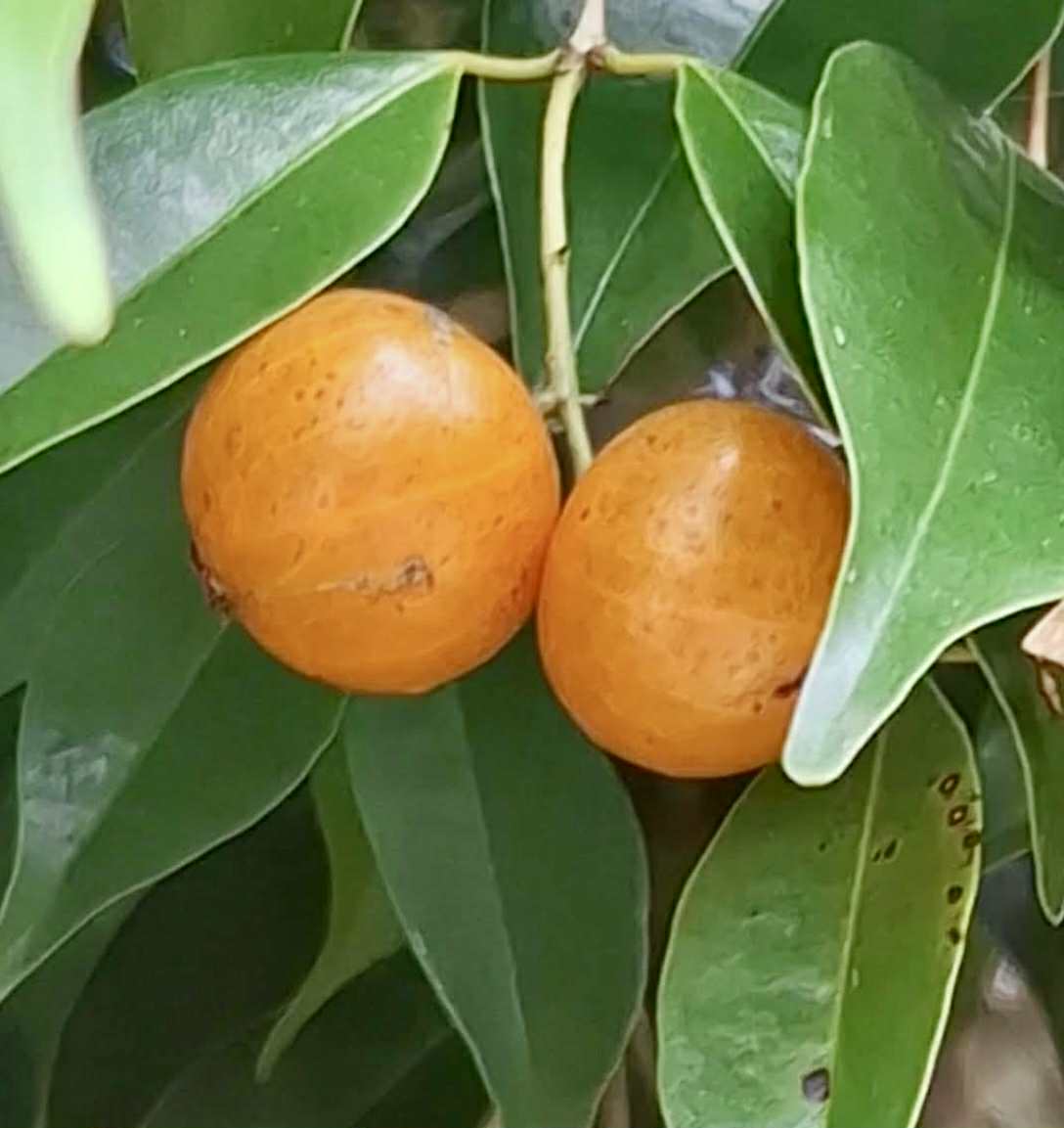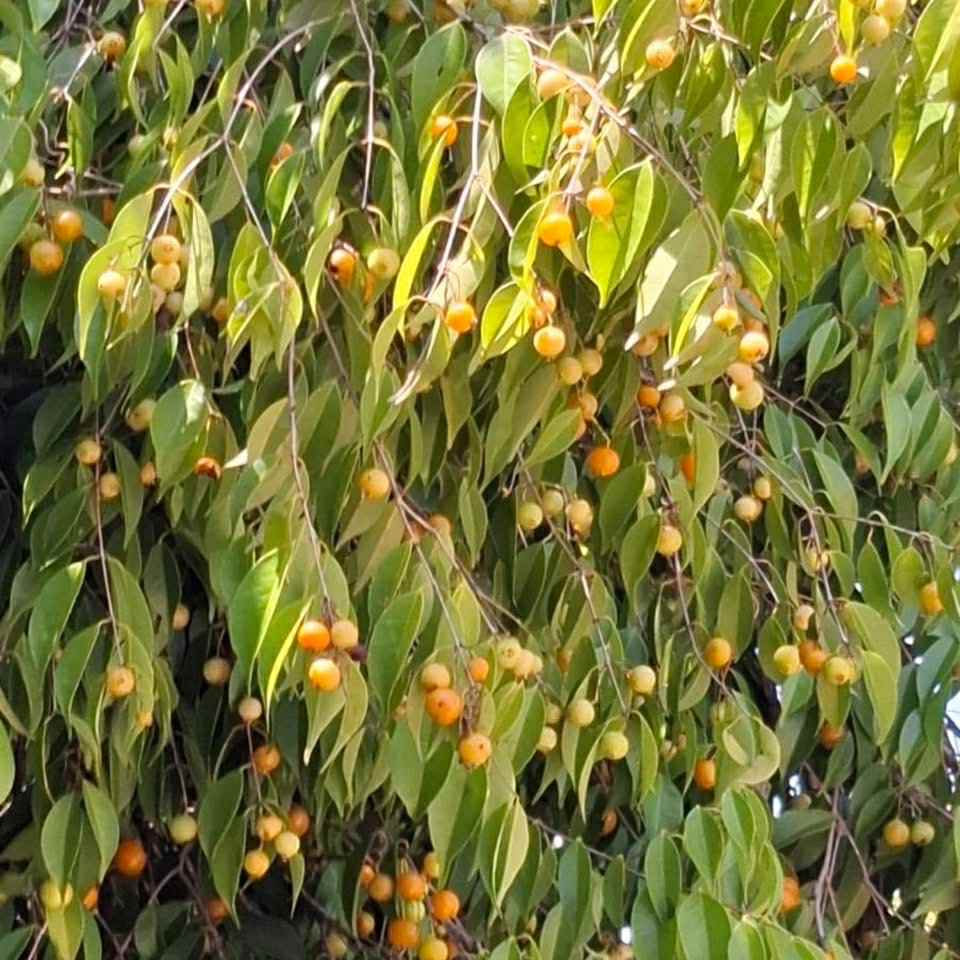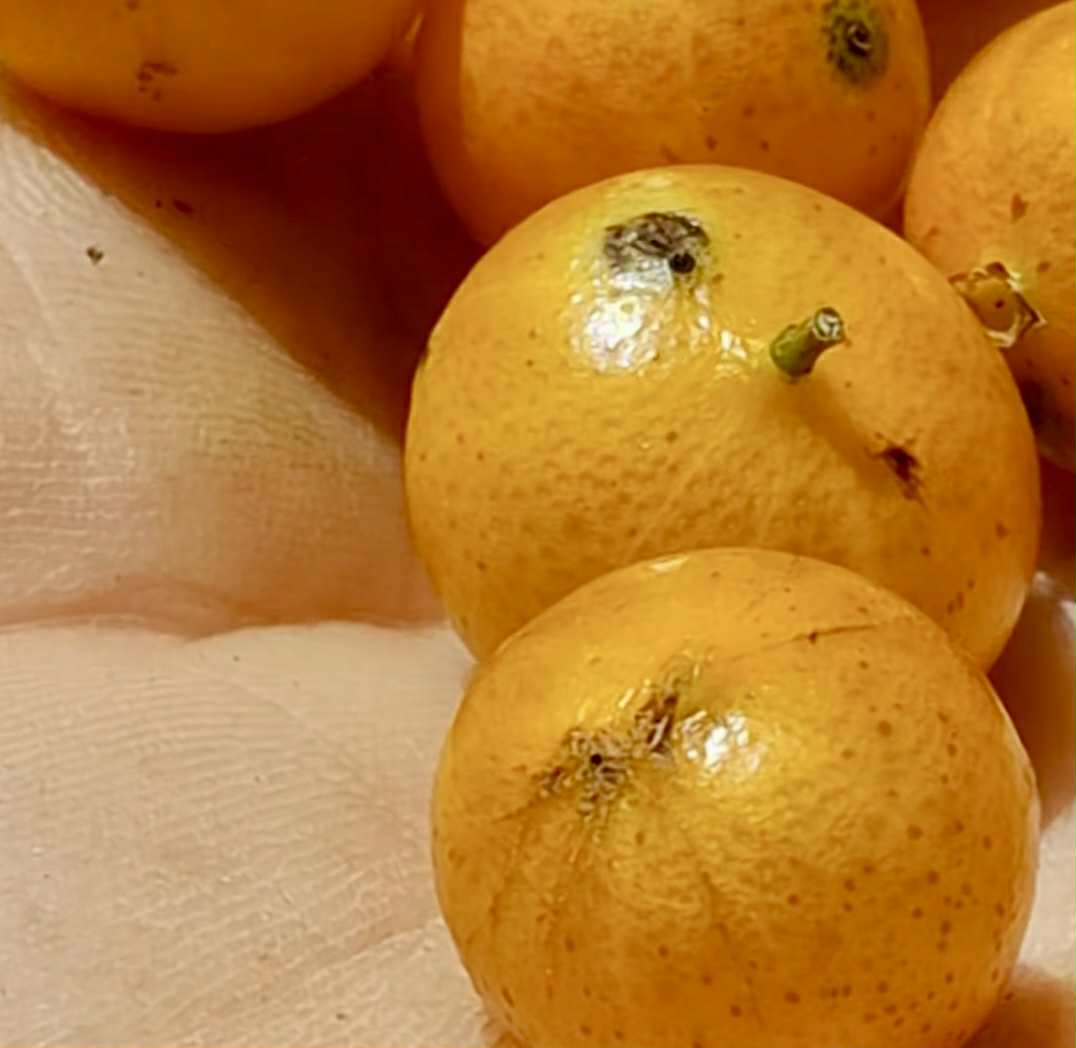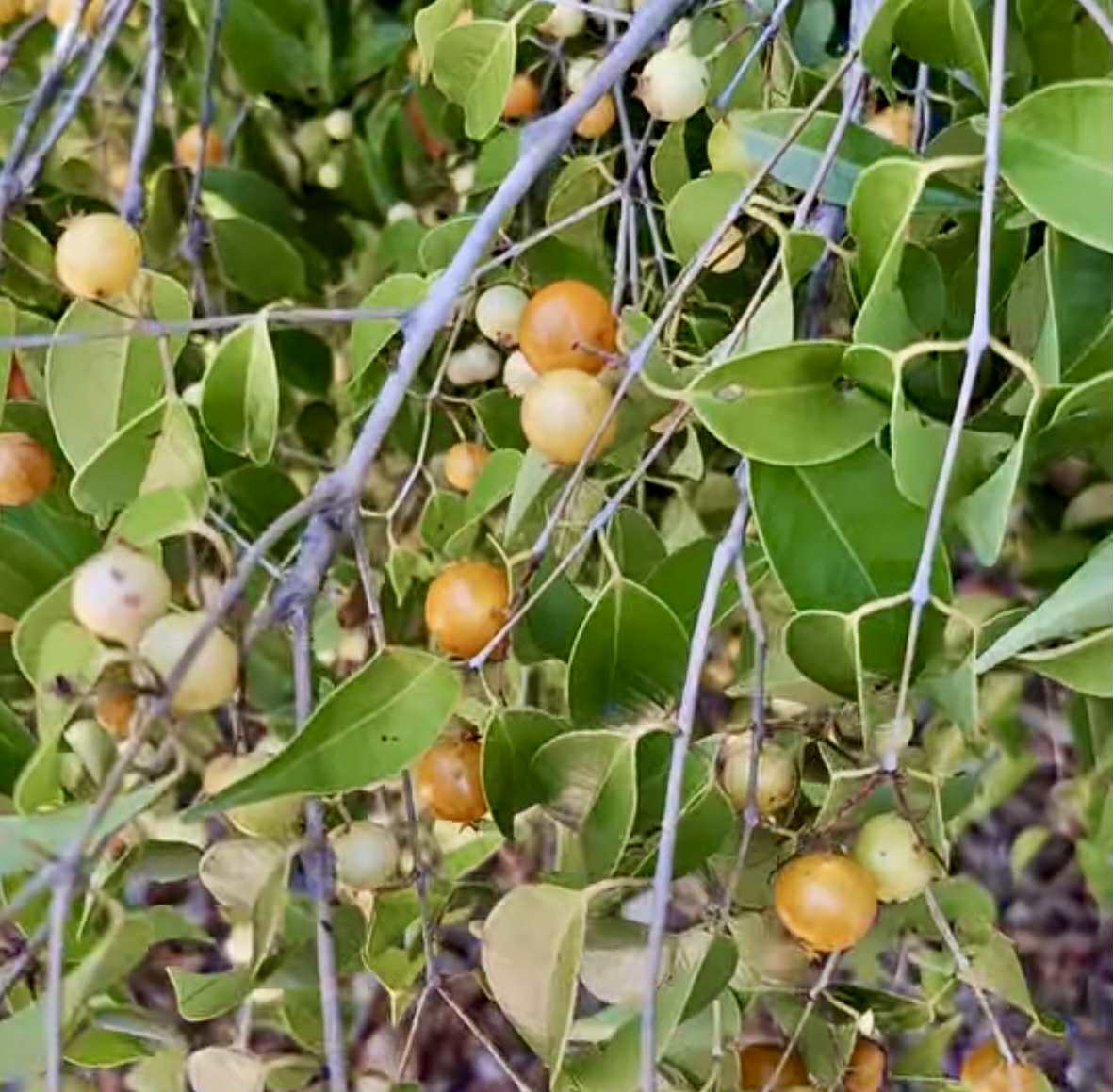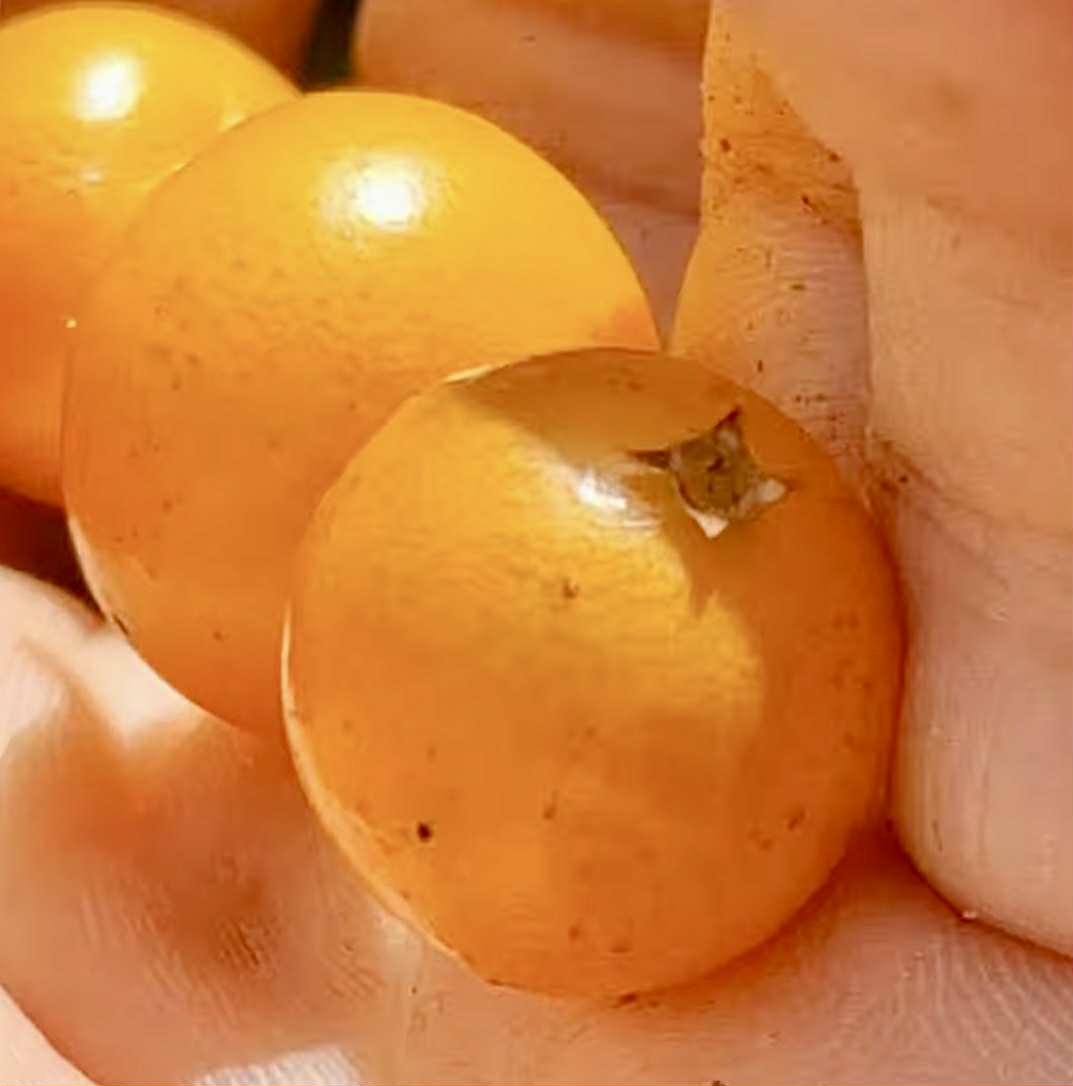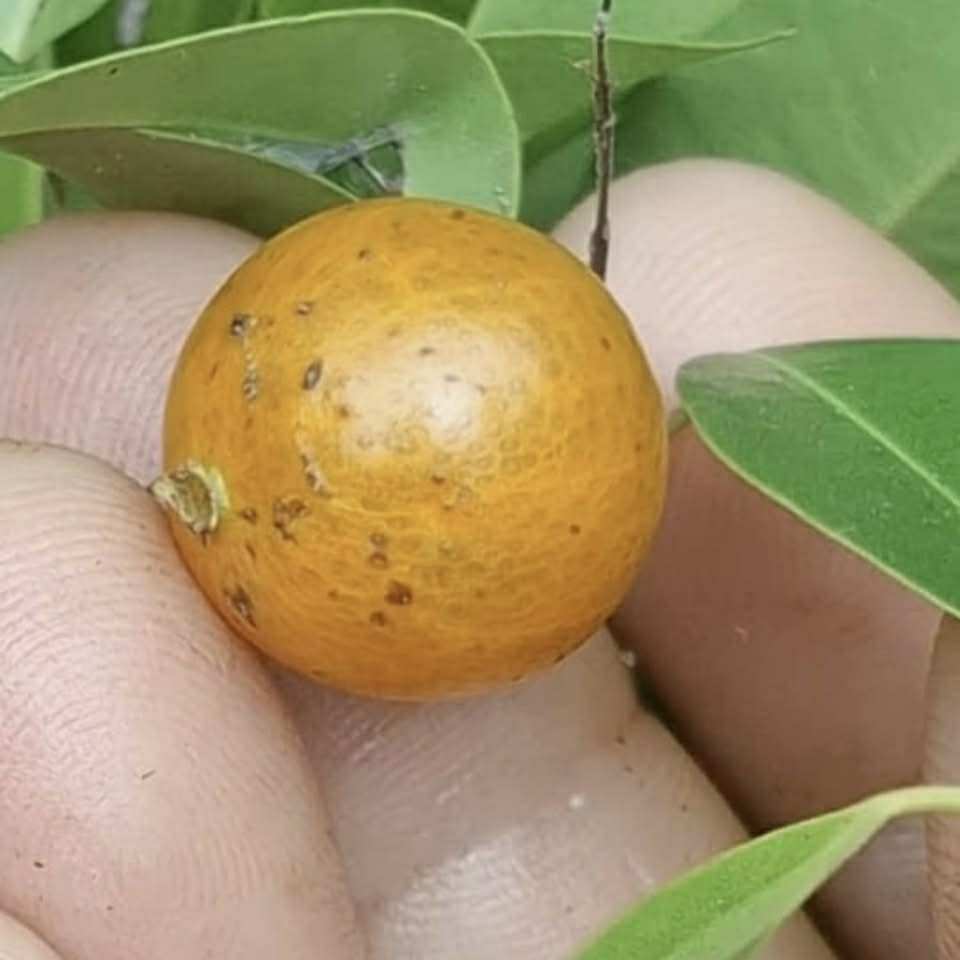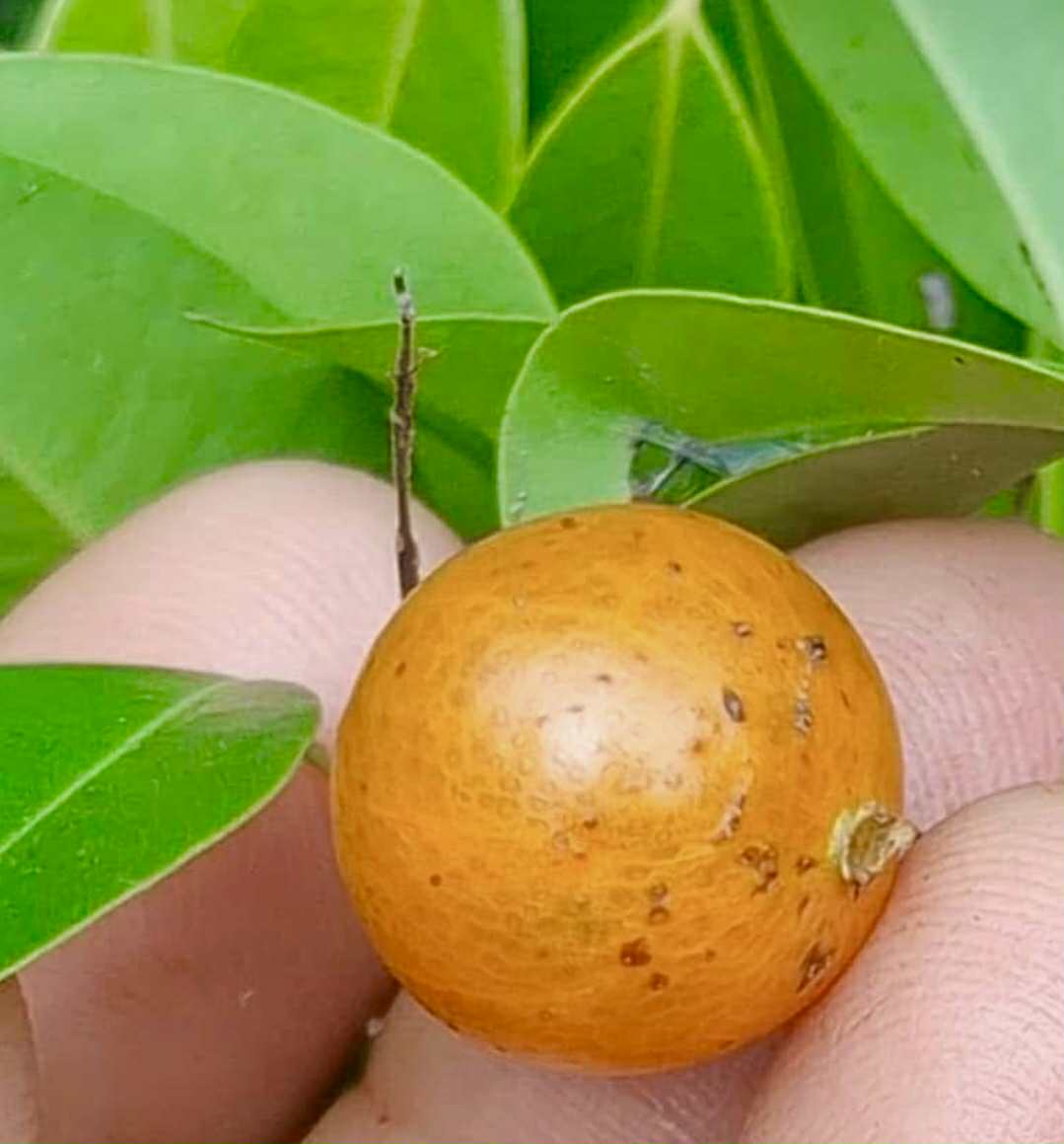Yellow Guaburiti (Plinia rivularis var. flava) - 1 fresh seed / 1 frischer Samen
Product number:
EI12385
product information "Yellow Guaburiti (Plinia rivularis var. flava) - 1 fresh seed / 1 frischer Samen"
Yellow Guaburiti (Plinia rivularis var. flava)
Family / Familie: Myrtaceae
origin from / Herkunft: Südamerika / South America
Climate / Klima: temperate to warm (10-30C / 50-86F) / gemäßigt bis warm (10-30C / 50-86F)
Use / Verwendung: edible fruits, juice, jam, ice cream, etc. / essbare Früchte, Säfte, Marmelade, Eis usw.
you buy / sie kaufen: 1 fresh seed / 1 frischer Samen
Family / Familie: Myrtaceae
origin from / Herkunft: Südamerika / South America
Climate / Klima: temperate to warm (10-30C / 50-86F) / gemäßigt bis warm (10-30C / 50-86F)
Use / Verwendung: edible fruits, juice, jam, ice cream, etc. / essbare Früchte, Säfte, Marmelade, Eis usw.
you buy / sie kaufen: 1 fresh seed / 1 frischer Samen
Delivery worldwide
There is a Jaboticaba that, quite unusually, doesn't bear its fruit directly on the main trunk, but in clusters on the branches.
Guaburiti (Plinia rivularis)
Normally, this Plinia has red to purple fruits, and now a yellow-fruited Guaburiti has been discovered!
Here you can get very fresh seeds of this yellow-fruited variety.
No matter where you read or talk about it, everyone says that this fruit not only tastes good, but "very good."
The taste is reminiscent of Jaboticaba with a mix of mango, passion fruit, peach, and clove, and the flesh is very juicy.
This Jaboticaba tolerates short-term frosts down to -4 degrees Celsius and gets fewer brown leaf tips than other Plinias.
The tree doesn't grow very large and is very well suited for container cultivation.
Guaburiti likes sunny and semi-shady locations, deep, well-draining soil, and will eventually produce an abundance of fruit.
By the way: the Latin word "rivularis" means "near a river" and refers to the first location where this wonderful Plinia was found.
Location and Temperature:
The plant needs a bright, sheltered location, protected from intense midday sun in very hot regions (partial shade or filtered light).
For cultivation in Central Europe, container growing with bright overwintering indoors or in a conservatory is recommended.
Soil and Watering:
The plant prefers nutrient-rich, well-draining, and moisture-retaining soil with a slightly acidic pH (optimally 5.5 to 6.5).
Consistent moisture is crucial, especially during the growing season.
The root ball should never dry out completely.
However, waterlogging must be avoided.
The plant grows relatively slowly and can be easily shaped or kept smaller by pruning, even as a bonsai. Flowers and fruits appear on the old wood.
Please overwinter it at a minimum temperature of 10 degrees Celsius, even though it can tolerate colder temperatures for a short time.
Es gibt eine Jaboticaba die völlig untypisch ihre Früchte nicht direkt am Hauptstamm bekommt, sondern bündelweise an den Ästen.
Guaburiti (Plinia rivularis)
Normalerweise hat diese Plinia rote bis violette Früchte und jetzt wurde eine gelbfruchtene Guaburiti entdeckt!
Hier bekommt ihr ganz frische Samen dieser gelbfruchtenden Art.
Egal wo man liest oder sich unterhält: alle sagen, dass diese Frucht nicht nur gut schmeckt, sondern "sehr gut".
Der Geschmack erinnert an Jaboticaba mit einem Mix von Mango, Maracuja, Pfirsisch und Gewürznelke und das Fruchtfleisch ist sehr saftig.
Diese Jaboticaba verträgt kurzfristig Fröste bis -4 Grad und bekommt seltener braune Blattspitzen als andere Plinias.
Der Baum wird nicht sehr groß und ist sehr gut für eine Kübelhaltung geeignet.
Guaburiti mag sonnige und halbschattige Plätze, einen tiefen, durchlässigen Boden und produziert später einmal Unmengen an Früchten.
Übrigens: das lateinische Wort "rivularis" bedeutet "flussnah" bzw. "in der Nähe eines Flusses" und bezieht sich auf den ersten Fundort dieser tollen Plinia.
Standort und Temperatur:
Die Pflanze benötigt einen hellen, geschützten Standort, der vor intensiver Mittagssonne in sehr heißen Regionen geschützt ist (Halbschatten oder gefiltertes Licht).
Für die Kultivierung in Mitteleuropa empfiehlt sich die Kübelhaltung mit einer hellen Überwinterung im Haus oder Wintergarten.
Boden und Gießen:
Die Pflanze bevorzugt einen nährstoffreichen, gut durchlässigen und feuchtigkeitsspeichernden Boden mit einem leicht sauren pH-Wert (optimal 5,5 bis 6,5).
Gleichmäßige Feuchtigkeit ist entscheidend, besonders während der Wachstumsperiode.
Der Wurzelballen sollte nie vollständig austrocknen.
Staunässe muss jedoch vermieden werden.
Die Pflanze wächst relativ langsam und kann gut durch Schnitt geformt oder kleiner gehalten werden, auch als Bonsai.
Blüten und Früchte erscheinen am alten Holz.
Bitte bei mindestens 10 Grad überwintern auch wenn sie es kurzfristig kälter verträgt.
There is a Jaboticaba that, quite unusually, doesn't bear its fruit directly on the main trunk, but in clusters on the branches.
Guaburiti (Plinia rivularis)
Normally, this Plinia has red to purple fruits, and now a yellow-fruited Guaburiti has been discovered!
Here you can get very fresh seeds of this yellow-fruited variety.
No matter where you read or talk about it, everyone says that this fruit not only tastes good, but "very good."
The taste is reminiscent of Jaboticaba with a mix of mango, passion fruit, peach, and clove, and the flesh is very juicy.
This Jaboticaba tolerates short-term frosts down to -4 degrees Celsius and gets fewer brown leaf tips than other Plinias.
The tree doesn't grow very large and is very well suited for container cultivation.
Guaburiti likes sunny and semi-shady locations, deep, well-draining soil, and will eventually produce an abundance of fruit.
By the way: the Latin word "rivularis" means "near a river" and refers to the first location where this wonderful Plinia was found.
Location and Temperature:
The plant needs a bright, sheltered location, protected from intense midday sun in very hot regions (partial shade or filtered light).
For cultivation in Central Europe, container growing with bright overwintering indoors or in a conservatory is recommended.
Soil and Watering:
The plant prefers nutrient-rich, well-draining, and moisture-retaining soil with a slightly acidic pH (optimally 5.5 to 6.5).
Consistent moisture is crucial, especially during the growing season.
The root ball should never dry out completely.
However, waterlogging must be avoided.
The plant grows relatively slowly and can be easily shaped or kept smaller by pruning, even as a bonsai. Flowers and fruits appear on the old wood.
Please overwinter it at a minimum temperature of 10 degrees Celsius, even though it can tolerate colder temperatures for a short time.
Es gibt eine Jaboticaba die völlig untypisch ihre Früchte nicht direkt am Hauptstamm bekommt, sondern bündelweise an den Ästen.
Guaburiti (Plinia rivularis)
Normalerweise hat diese Plinia rote bis violette Früchte und jetzt wurde eine gelbfruchtene Guaburiti entdeckt!
Hier bekommt ihr ganz frische Samen dieser gelbfruchtenden Art.
Egal wo man liest oder sich unterhält: alle sagen, dass diese Frucht nicht nur gut schmeckt, sondern "sehr gut".
Der Geschmack erinnert an Jaboticaba mit einem Mix von Mango, Maracuja, Pfirsisch und Gewürznelke und das Fruchtfleisch ist sehr saftig.
Diese Jaboticaba verträgt kurzfristig Fröste bis -4 Grad und bekommt seltener braune Blattspitzen als andere Plinias.
Der Baum wird nicht sehr groß und ist sehr gut für eine Kübelhaltung geeignet.
Guaburiti mag sonnige und halbschattige Plätze, einen tiefen, durchlässigen Boden und produziert später einmal Unmengen an Früchten.
Übrigens: das lateinische Wort "rivularis" bedeutet "flussnah" bzw. "in der Nähe eines Flusses" und bezieht sich auf den ersten Fundort dieser tollen Plinia.
Standort und Temperatur:
Die Pflanze benötigt einen hellen, geschützten Standort, der vor intensiver Mittagssonne in sehr heißen Regionen geschützt ist (Halbschatten oder gefiltertes Licht).
Für die Kultivierung in Mitteleuropa empfiehlt sich die Kübelhaltung mit einer hellen Überwinterung im Haus oder Wintergarten.
Boden und Gießen:
Die Pflanze bevorzugt einen nährstoffreichen, gut durchlässigen und feuchtigkeitsspeichernden Boden mit einem leicht sauren pH-Wert (optimal 5,5 bis 6,5).
Gleichmäßige Feuchtigkeit ist entscheidend, besonders während der Wachstumsperiode.
Der Wurzelballen sollte nie vollständig austrocknen.
Staunässe muss jedoch vermieden werden.
Die Pflanze wächst relativ langsam und kann gut durch Schnitt geformt oder kleiner gehalten werden, auch als Bonsai.
Blüten und Früchte erscheinen am alten Holz.
Bitte bei mindestens 10 Grad überwintern auch wenn sie es kurzfristig kälter verträgt.

